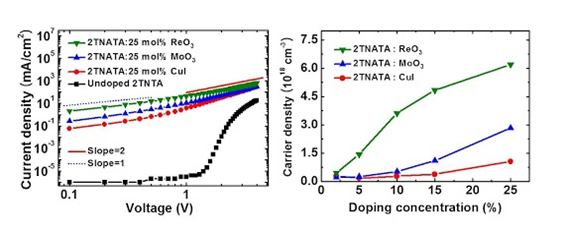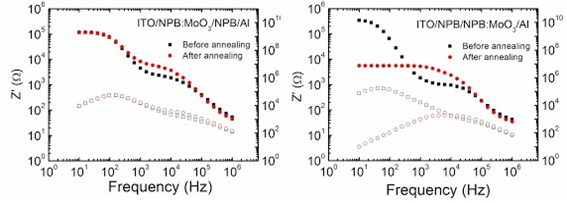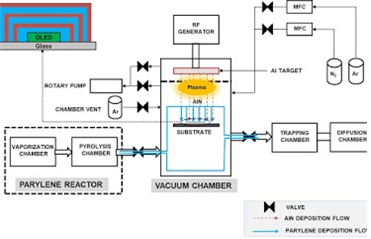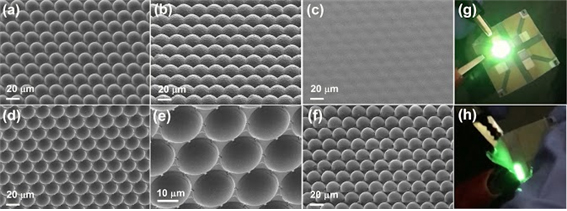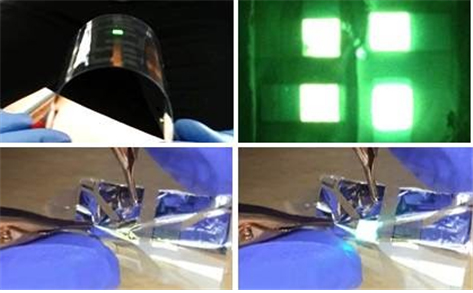유기반도체소자연구실
유기반도체소자 연구실
Organic Semiconductors
Lab.
연구실소개
유기물반도체 연구실은 OLED 와 OTFT와 같은 차세대 전자소자 구현을 위한 유기물 반도체의 전기적, 광학적 물성 연구 및 이를 활용한 전자소자 분석을 진행하고 있습니다.
OSEL’s researches have centered on the optical and electrical characteristics of organic semiconductors for organic electronics such as OLED and OTFT.
연구분야
(1)유기물 반도체의 도핑 메커니즘 규명
What is the Electrical Doping?
In organic semiconductor, Electrical doping is the process of intentionally introducing impurities into an intrinsic organic semiconductor for the purpose of modulating its electrical properties.
Doping of organic semiconductors is an important technique for reducing the driving voltage and improving the power efficiency of organic electronic devices. Since doped organic semiconductor layers in organic light emitting diodes (OLEDs) or organic photovoltaic cells (OPVs) reduce the contact resistance between electrodes and organic materials, p-doped/intrinsic/n-doped (p-i-n) structures have been used to realize highly efficient OLEDs and OPVs.
(2) 차세대 반도체 공정 장비 개발
What is the poly-para-xylylene (parylene) films?
Poly-para-xylylene (parylene) have been used in the conformal coating industry to protect electrical devices and mechanical parts from outer stresses, such as chemical reactions or physical stress. Compared to conventional polymer films, parylene films can be polymerized on a surface directly from the gas phase under the vacuum condition. The resulting pinhole-free parylene films have a number of advantages, including high chemical and electrical resistance, high transparency, and low gas permeability.
(3) 유연 전자 소자의 특성 분석 장비 개발
Flexible OLEDs and Light extraction of OLEDs
Flexible OLED is an emerging display technology that enables beautiful and efficient displays and lighting panels. Flexible OLEDs are already being used in many mobile devices and TVs, and the next generation of these panels will be flexible and bendable.
